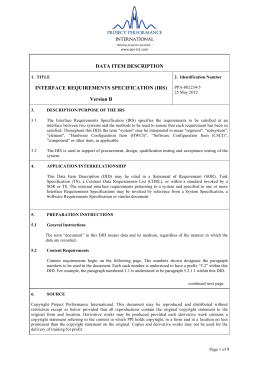Army Regulation 25-50: What You Need to Know The United States Army is guided by a set of regulations and policies that help maintain order and ensure effective communication. One such important regulation is Army Regulation 25-50. In this post, we will dive into the details of AR 25-50, explain its significance, and provide you with a comprehensive overview of this essential Army regulation. 1. Understanding Army Regulation 25-50 Army Regulation 25-50, titled Preparing and Managing Correspondence, is a vital regulation that sets guidelines for writing official Army correspondence. It provides standards for the format, style, and content of written communication within the Army. Whether you are an enlisted soldier, officer, or Army civilian, being well-versed in AR 25-50 is crucial as it ensures professionalism, clarity, and consistency in all Army written communications. 2. Importance of Following AR 25-50 Following Army Regulation 25-50 is not just about adhering to bureaucratic rules; it has a significant impact on overall mission effectiveness. Properly written correspondence ensures that the intended message is conveyed accurately, maintains accountability, and fosters effective communication across all levels of the Army hierarchy. By adhering to the guidelines outlined in AR 25-50, Army personnel can ensure that their correspondence is clear, concise, and in compliance with Army standards. 3. The Structure of AR 25-50 Understanding the structure of Army Regulation 25-50 is essential to effectively utilize this regulation. The regulation is divided into various sections, each addressing different aspects of written correspondence. Here are some key sections of AR 25-50: a. Purpose and Applicability: This section explains the purpose of AR 25-50 and defines who is subject to its guidelines. It clarifies that the regulation applies to all Army personnel and provides a broad overview of the requirements. b. Planning and Designing Correspondence: This section focuses on the initial steps of writing correspondence, including identifying the purpose, intended audience, and desired results. It highlights the importance of careful planning before drafting any official Army communication. c. Using Letterhead, Memorandum, and Messages: This section delves into the specifics of formatting official Army correspondence. It details the correct usage of letterhead, memorandums, and messages, including their respective formats, positioning of elements, and proper etiquette. d. Style and Tone: The style and tone of written correspondence play a crucial role in conveying the intended message. This section provides guidelines on choosing the appropriate style, tone, and level of formality for various types of Army correspondence. e. Exceptions to AR 25-50: This section outlines situations where an exception to the regulation may be necessary. For instance, when corresponding with foreign military personnel, certain allowances may need to be made to accommodate cultural differences. 4. Frequently Asked Questions (FAQs) To provide you with further clarity regarding Army Regulation 25-50, we have compiled a list of frequently asked questions: Q1. Is AR 25-50 applicable to all branches of the Army? Yes, AR 25-50 is applicable to all branches of the United States Army, including active duty, reserve, and National Guard components. Q2. Are there any penalties for not adhering to the regulations outlined in AR 25-50? While there are no specific penalties outlined in the regulation itself, failure to follow the guidelines could result in confusion, miscommunication, and potential disciplinary action. Q3. Can I use abbreviations or acronyms in my written correspondence? Yes, AR 25-50 allows for the use of approved abbreviations and acronyms. However, it is important to ensure that the recipient understands their meaning to avoid any potential confusion. 5. Conclusion Army Regulation 25-50 is a fundamental regulation that guides written communication within the United States Army. By understanding and following the guidelines outlined in AR 25-50, Army personnel can ensure that their correspondence is professional, clear, and compliant with Army standards. Adhering to this regulation is crucial for maintaining effective communication and supporting the overall mission effectiveness of the Army.
Amazon.com: Army Regulation AR 25-50 Preparing And Managing
 Image Source : www.amazon.com
Image Source : www.amazon.com regulation army ar kindle preparing managing correspondence command policy november amazon edition
Amazon.com: Customer Reviews: Army Regulation AR 25-50 Preparing And
 Image Source : www.amazon.com
Image Source : www.amazon.com correspondence managing preparing regulation army ar reviews amazon customer
Army Regulation 25-1, 'Army Knowledge Management And / Army
 Image Source : pdf4pro.com
Image Source : pdf4pro.com Army Regulation AR 25-50 Preparing And Managing Correspondence 17 May 2013
 Image Source : www.bookdepository.com
Image Source : www.bookdepository.com army 50 regulation ar correspondence preparing ar25 managing government states united slideshare
👍 Army Writing Regulation Ar 25 50. How To Write An Army Memo. 2019-01-29
 Image Source : wingle.jp
Image Source : wingle.jp memorandum continuity certificate memo regulation invoice sample write wordexcelsample interoffice shatterlion cumed
Ar25 50[1]
![Ar25 50[1]](https://image.slidesharecdn.com/ar25501-111108123956-phpapp02/95/ar25-501-33-728.jpg?cb=1320756059) Image Source : www.slideshare.net
Image Source : www.slideshare.net ar25 moa mou
🏷️ What Is An Army Writing Standard. Army Writing Program (www
 Image Source : www.biactivpharma.com
Image Source : www.biactivpharma.com army writing standard memo memorandum aar template point sop body reg direction someone started could right
Army Regulation 25–50 - American Volunteer Reserve
 Image Source : studylib.net
Image Source : studylib.net data volunteer regulation reserve army american performance international project description
Regulation army ar kindle preparing managing correspondence command policy november amazon edition. 🏷️ what is an army writing standard. army writing program (www. Amazon.com: customer reviews: army regulation ar 25-50 preparing and. Memorandum continuity certificate memo regulation invoice sample write wordexcelsample interoffice shatterlion cumed. Data volunteer regulation reserve army american performance international project description
 Image Source : www.amazon.com
Image Source : www.amazon.com  Image Source : www.amazon.com
Image Source : www.amazon.com  Image Source : pdf4pro.com
Image Source : pdf4pro.com ![Ar25 50[1]](https://image.slidesharecdn.com/ar25501-111108123956-phpapp02/95/ar25-501-33-728.jpg?cb=1320756059) Image Source : www.slideshare.net
Image Source : www.slideshare.net  Image Source : studylib.net
Image Source : studylib.net